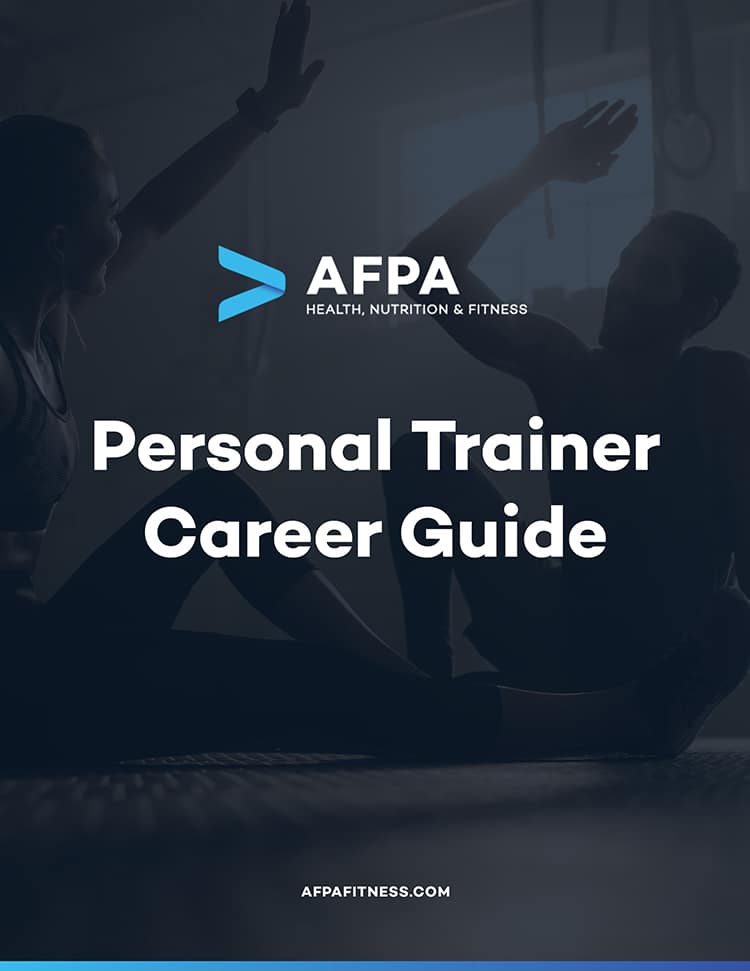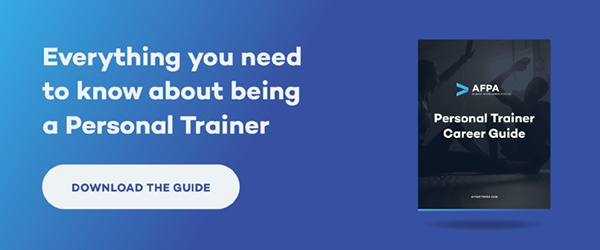 [ad_1]
[ad_1]
Fitness Trainers– You think you’ve got it: the perfect blend of strength training exercises that’ll help your client achieve their dream body.
But when you send it over to your client? They aren’t entirely convinced.
And when probed, they reveal that they’re “desperate to lose weight” and “because the plan only contains strength training exercises, it doesn’t seem like it’ll help me get back to my pre-pandemic weight.”
Ouch. Read on for suggestions on how to respond to your client’s concerns—and the six exercises you should consider including in their workout plan to help with their weight loss efforts.
Learn How to Become a Certified Personal Trainer Online in Less Than 6 Months

Highlight the Benefits of Strength Training for Weight Loss
You should first address your client’s misconception that strength training wouldn’t help them lose weight fast.
And when doing that, you’ll want to build your message upon the following points:
- Energy balance is the ultimate determinant of weight: Many clients mistakenly believe special workout programs or exercises geared toward weight loss exist. But the truth is that weight loss comes down to sticking to a calorie deficit.
- They can’t lose weight too fast: Make it clear that you understand your client’s desperation for weight loss. Then, remind them that getting all “fast and furious” about shedding the weight can do them more harm than good. Losing weight too quickly (i.e., more than one to two pounds weekly) puts your client at risk of many health problems, including muscle loss and nutritional deficiencies.
- Muscle mass maintenance is crucial: Cardio burns more calories per session for sure. But it doesn’t help with (and could even potentially hurt) muscle mass maintenance or growth. That isn’t ideal. Muscle mass preservation in a calorie deficit helps with not only metabolism rates but also appetite regulation. Both of which are key to helping your client keep their weight loss results.
6 Calorie-Intensive Exercises for Weight Loss
Awesome. Now your client’s fully aware of the benefits strength training exercise can bring for their weight loss efforts.
That said, that doesn’t mean you can leave their program be.
The following six exercises could help them “shift the needle” toward effective weight loss (while remaining within the recommended, safe limits, of course)—so to speak.
These exercises combine resistance training and cardio elements, so your client effectively harnesses cardio’s calorie-burning powers, plus strength training’s muscle mass maintenance benefits.
A quick note: You shouldn’t program these exercises into your client’s workout routine exclusively. They’re intense and can cause recovery issues when done excessively.
Jump Rope
There’s a reason skipping is well-loved by pro athletes everywhere—from MMA fighters to famous footballers, from bodybuilding legends to CrossFit competitors.
It’s ideal for conditioning and is incredibly versatile.
Think about how intense the exercise is.
Your client will have to use their shoulders and arms to turn the rope at a quick pace while their legs (think: quads, hamstrings, and calves) and glutes work hard to keep up.
The exercise also calls for core involvement.
So, is it any surprise to know that skipping can help an average 140-pound woman burn up to 318 calories every 30 minutes?
That said, your client might become bored with the movement’s repetitive nature. So here are three things you could do to up the “fun factor” for your client:
- Add intermediate or advanced skipping movements (e.g., double-under) once your client has mastered the basics of jump rope.
- Get your client to perform the exercise in a HIIT format (e.g., 30 seconds of all-out skipping, followed by 20 seconds of rest).
- Mix up when your client performs it (e.g., get your client to perform it as a warm-up exercise instead of a finisher exercise).
Rowing
Does your client struggle with a history of knee injuries? If yes, consider programming in rowing as it will help your client work at the highest intensity possible with the lowest impact on their joints.
As a full-body workout, rowing targets 85% of the body’s muscles—including the legs, arms, back, and core.
Meaning? It helps increase your client’s strength and cardiovascular capacity simultaneously (i.e., involves both cardio and strength-training elements).
But how does that translate to its calorie-burning abilities? Impressively well, it appears.
Research shows that the metabolic requirements of an interval rowing workout are similar to what’s experienced during MMA training. Plus: A man weighing 183 pounds (83 kg) can expect to scorch around 377 calories from a 30-minute row session.
Unfortunately, though, many people in the gym perform the exercise with poor technique—reducing its effectiveness while significantly increasing the likelihood of injuries. That’s why you should make sure your client does the following when they row:
- Keep a neutral upper back: If your client rounds their upper back, they’re letting their shoulders do all the work. So, instead, get them to retract their shoulders slightly and engage their core. A good coaching cue to give them would be “open your chest.”
- Pull the oar to the region below the chest: The overreliance on the rear delts (one of the smallest muscle groups around) means that your client wouldn’t last long enough on the machine to realize its weight loss benefits. Instead, get your client to pull the oar to their stomachs; this shifts the load to their bigger, stronger mid-back muscles.
Battle Ropes
Don’t look down on this equipment-light exercise: A 2015 study found that just ten 15-second bursts of battle ropes can lead to the same degree of heart rate increase as an all-out full-body sprint in participants!
What about calories?
Well, it appears that just 10 minutes on the battle ropes can help your client torch up to 120 calories!
Here are a few pointers that’ll help your client maximize calorie-burn (along with safety) through the exercise:
- Ensure there’s slack in the ropes: The amount of slack in the rope determines the load—having your client move away from the anchor point decreases exercise intensity while stepping toward the anchor point increases it. That said, there shouldn’t be so little slack in the rope that your client’s shoulder ends up fighting just to stay in its socket.
- Use a variety of directions: Don’t just have your client wave the ropes up and down. There are many directions and configurations you could have them do (e.g., going from side to side, moving the ropes in circles, and performing alternating plank waves). Get creative with it!
Wall Balls
A classic CrossFit movement, the wall ball exercise is a high-intensity compound move that requires maximum effort from various large muscles in your client’s body.
Also known as a wall ball squat, the wall ball exercise is where you have your client perform a squat—then throw a ball against the wall as they’re coming out of the bottom position. They’ll have to catch the ball on the rebound with their arms overhead, then immediately lower right back down into the squat.
Yes: It’s an intense exercise that’ll target your client’s quads, shoulders, triceps, chest, core, glutes, and hamstrings, plus improve their explosive power and cardiovascular endurance.
That’s why it’s essential to keep an eye on your client’s form.
It’s all too easy for their form to break down when they get tired. Here are a few things you could do to ensure they’ll maintain proper form through all working sets and reps:
- Choose the correct type of ball: Make sure your client uses the wall ball instead of a medicine ball or a slam ball. (Yes, they’re different things!)
- Have your client start light: Allowing them to perform the wall ball with lighter balls gives them the chance to master the movement—before progressively overloading on the exercise. You could also get them to toss the ball to a lower height; this makes the exercise easier.
Farmer’s Walk
Let’s be honest. All the exercises mentioned above (i.e., jump rope, rowing, battle ropes, and wall ball slams) call for decent coordination skills. So, what happens if your client struggles in this area?
Is there an exercise that’ll help your client train all-out and burn as many calories as they possibly could without worrying about their coordination?
Thankfully, yes. And it’s none other than the farmer’s walk.
This is where you get your client to hold a heavy object (it could be a barbell, pair of dumbbells, kettlebells, or whatever you can think of), then walk a specific distance without ever setting the weight on the floor. Simple as that.
While simple, the farmer’s walk is a highly effective exercise.
It works nearly every muscle group in your client’s body, particularly the legs, core (including the region’s deep stabilizing muscles, transverse abdominis), and shoulder muscles.
The exercise is also fantastic for improving your client’s grip strength—which, in turn, allows your client to lift heavier weights in the gym.
As usual, a few key points to note as your client performs the movement for maximum effectiveness and safety:
- Maintain an upright posture: Remind your client to stand up “straight and tall” throughout. Allowing their torso to lean over places unnecessary stress on the lower back—and could lead to injuries.
- Pick a suitable weight: The load should be challenging, but not so challenging that your client can’t even complete one round without having to drop the weights on the floor.
- Switch up carry positions: If you’re having your client do multiple sets, get them to switch up carry positions (e.g., suitcase carry, at the shoulders, and overhead). This prevents grip fatigue from interfering with the intensity of the exercise.
Prowler Sled Push
Looking for another exercise with low coordination demands but high calorie-burn capabilities?
Then a good candidate is the prowler sled push.
Like the farmer’s walk, the prowler sled push is a low-skill move that requires a decent amount of effort. To get your client to do the basic sled push, they’ll need to drive the (suitably loaded) sled forward with their hamstrings, glutes, and calves.
That’s not all: Their core will be working overdrive, too, since it’s responsible for power transfer from the lower body—through the torso—and into the arms, then the sled.
Your client’s upper back muscles will engage too. It’s basically a full-body compound movement.
A critical coaching cue to use with your client is: “Keep arms close to your body.”
You want your client to bend their elbows as they’re pushing the sled. This will naturally lead to a more upright torso angle, around 45 degrees.
This is ideal in the beginning stages (as your client gets familiar with the movement). It helps build resilient spinal integrity (i.e., reminds your client to maintain a neutral back) and reinforces proper pushing posture.
Takeaway
While these exercises are great at burning calories, it’s important to emphasize to your clients that both diet and training need to work together hand in hand for effective and sustainable weight loss.
And if you’re interested in furthering your education as a personal trainer, consider AFPA’s various nutrition certifications and personal trainer specialty certifications—where you can learn how to optimize a client’s nutrition needs and fitness for weight loss.



0 Reviews:
Post Your Review